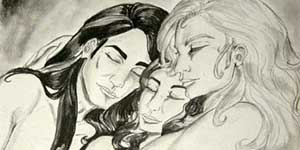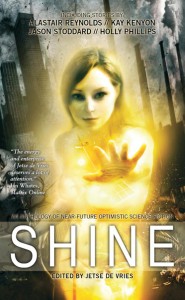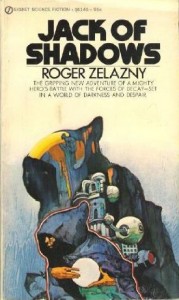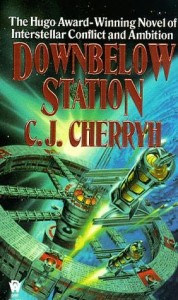Crossed Genres is running a ‘donate for Haiti’ campaign by having SF/F authors link free stories to their site. Contra Mundum originally appeared in After Hours 18, p. 30; Spring 1993 (all my stories published there can be found in The Realms of Fire). The talented Joanna Barnum graciously gave me permission to use one of her lovely watercolors to enrich the story. If you like the works, please consider making a donation to one of the charities listed at Crossed Genres.

The Tiger’s Bride © Joanna Barnum
Contra Mundum
by Athena Andreadis
Note: Ariáthne, the maiden aspect of the Minoan Great Goddess, was the Mistress of Animals. Her chariot, like that of her Semitic counterpart, Ishtar, was pulled by lions. There are persistent rumors of mountain lion sightings in the Massachusetts Quabbin Reservoir. No one has proved or disproved their existence.
——-
After an interminable interval of slate-gray skies came one day as clear and hard as a diamond. Ariáthne decided to postpone her — so far fruitless — job search and get out of the city. On the way north, she stopped at the Stoneham zoo. She had never been there before.
Her heart swelled with anger and pity. The animals were crowded, emaciated, sickly. She had left the big cats for last. Many visitors were gawking intently into the tiger pit. It was feeding time; the older, much larger male stood over the beef haunch. He periodically interrupted his eating to slap, with increasing ferocity, the young female that kept stealing up to the food, undaunted by the blows that left bloody furrows in her fur.
Ariáthne walked up to a uniformed keeper. In a voice raspy with checked wrath, she asked:
“If they don’t get along, why do you put them together?”
“We don’t have any more space,” he said helplessly. “It takes ages to have a proposal approved by the committee. We had hoped that they would tolerate each other, but the only way this could happen now is if she were to go in heat. But her weight has dropped so much, that has also become impossible. She’ll die of anemia or concussion. Or they’ll come to their senses and have her put to sleep.”
Ariáthne left, hardly knowing where she was going. She drove to Plum Island, but the beautiful place had suddenly become invisible. Burned onto her retina remained the image of the thin, multiply scarred flank of the tigress. She returned home, sat unmoving till it grew dark. Then she rummaged through her tool chest, selected a crowbar and a large file and left.
——-
She had no difficulty scaling the walls. With such lax security, she was surprised the animals hadn’t been hurt. She timed the comings and goings of the single guard, then set to work. Despite the premature arthritis which was already crippling her fingers, the years of laboratory research had given her discipline and skill. She worked so quietly that the animals were not disturbed — except for the tigress, who had come up to the bars and was watching silently, intently.
Ariáthne finally released the lock and sprinted for the wall. She tumbled into the car, then turned to look. Outlined against the stars, the zoo fence suddenly sprouted a cat-shaped bulge. Without any hesitation, the tigress approached the car in a stately trot.
She is hungry, thought Ariáthne, and fear brushed her mind. The tigress put her face and front paws against the passenger window, transfixing the woman with the lamps of her eyes. Without pausing to think, Ariáthne opened the right door and flipped the seat forward. Soundlessly, the tigress jumped in the back and Ariáthne drove away as fast as the dilapidated engine would bear.
I must be finally going crazy, she moaned to herself. If I don’t get eaten, how am I to explain this to the authorities? The neighbors? My landlord? What will I do, hide her in the bathtub and feed her cockroaches?
The big cat’s musky smell flooded the car. Soon a rumble covered the noise of the engine and Ariáthne knew that her passenger would be civil to the chauffeur.
——-
 When they reached her apartment house, she considered carrying the tigress upstairs wrapped in the dusty quilt kept in the car, but she was too tired and her package too heavy. So she opted for the matter-of-fact approach and simply used the stairs, since everyone else seemed to only employ the elevators. The tigress didn’t need much coaxing. Once in the tiny apartment, she investigated it minutely. The two resident cats initially reacted with agitation; however, they eventually decided that she smelled like their long-lost mother. Shortly thereafter, all three formed a tight, snoring coil on the bed. Exhausted, and aware that her blankets were being subjected to major shedding, Ariáthne grumpily rearranged the inert mass enough to carve out a small niche for herself. Lulled by the purring and warmth, she instantly sailed into slumber.
When they reached her apartment house, she considered carrying the tigress upstairs wrapped in the dusty quilt kept in the car, but she was too tired and her package too heavy. So she opted for the matter-of-fact approach and simply used the stairs, since everyone else seemed to only employ the elevators. The tigress didn’t need much coaxing. Once in the tiny apartment, she investigated it minutely. The two resident cats initially reacted with agitation; however, they eventually decided that she smelled like their long-lost mother. Shortly thereafter, all three formed a tight, snoring coil on the bed. Exhausted, and aware that her blankets were being subjected to major shedding, Ariáthne grumpily rearranged the inert mass enough to carve out a small niche for herself. Lulled by the purring and warmth, she instantly sailed into slumber.
She awoke to snuffling and discovered that she was being examined as thoroughly as her apartment had previously been. The alarm clock showed late afternoon; the light through the window was already amber. Realizing that no one had been fed for the last twelve hours, she ran out, praying that in her absence the intra-feline truce might still prevail.
As she entered the elevator, staggering under the weight of six pounds of hamburger, she saw a note on the elevator wall: “Fumigation tomorrow, 9 am to 2 pm. Please remove all pets from your apartment.” Well, she would have to put the cats on the fire ladder as usual. What a nuisance — as if it had ever made a dent into the cockroach hordes. And then she remembered.
She went in, fed everybody. Then, to clear her mind, and recalling that big cats needed exercise, she snuck into the back alley with her unlikely companion, as soon as the darkness was complete.
——-
She had never liked the place. Dark, dotted with garbage dumps, broken bottles and struggling sumac trees, it mirrored and amplified the alienation around it. She waited uneasily for the tigress to finish, her back against a pillar that once had held an electric lamp. And then, the nape of her neck bristled and her bloodbeat faltered.
“Hey, baby.” He wasn’t loud; didn’t need to be. The alley was a dead end and very dark.
“Show us the good stuff.”
They herded her towards the trash cans against the back of the alley. One carried a knife, the other a short metal pipe. It would do. Tomorrow she would be collected with the rest of the garbage. To her, the weapons were in sharp focus; the rest of them remained a blur.
From the mouth of the alley came a low cough. The taller one clicked his tongue in annoyance.
“Check it out,” he rapped. “Damn old winos. I’ll handle this — you take your turn later.”
The other grumbled under his nose, then loped towards the source of the noise. The one left jabbed her lightly in the midriff with his knife.
“Make it real easy, honey. Maybe we won’t have to mark this pretty face.”
A short scream arose, then was bitten off. The man smirked.
“Sounds like the busybody met my friend. Hey, buddy,” he half-shouted, “come share the goods.”
A quiet pad, pad, pad was approaching. Two phosphorescent orbs appeared, stopped, started slithering towards him. He looked at her, fingered his knife, uncertain.
“This some kind of trick?” he started. “Don’t try to pull…” and then the tigress came into full view, and his voice died.
His knife clattered on the ground; a dark stain started spreading in the front of his trousers. The tigress, disgusted with the lack of spirit in her quarry, half-heartedly closed her jaws over his calf. He collapsed to the ground. She released him, batted him around a few times, gave the equivalent of a shrug and came up to Ariáthne.
Ariáthne looked him over; he was alive, more in shock than hurt. Then she headed out of the alley. There lay the other one, untouched, his eyes frozen open, dead of heart failure.
She went to her car, opened the door, flipped the seat forward. Without demur, the tigress leapt in. Pulling on her gloves, as it was getting bitterly cold, Ariáthne headed westward. She entered the turnpike. At some point, the tigress decided she preferred the front seat, much to Ariáthne’s discomfort. Nevertheless, she felt grateful to have warm fur nestling next to her.
On and on she went, under the brilliance of the Hunters, Procyon, Sirius and Orion. The highway was deserted. She started humming a Springsteen tune, the usual intoxication whenever she was at the wheel stealing upon her. She turned off at the Quabbin Reservoir exit, went all the way to the entrance of the park, climbed over the fence. The tigress followed. Then she let the tigress lead, since she had better night eyes.
When they were well into the foliage, she motioned the tigress forward. Reluctantly, the tigress moved into the bushes, then came back. Ariáthne shooed her on again. This was repeated a few more times. Finally, the tigress came over, rubbed her whole length against Ariáthne and melted away silently into the dark background.
Ariáthne walked slowly back to the car, happiness rippling inside her like waves upon the shore. There had been sightings of mountain lions in the Quabbin. Somehow, they had made their way eastward across the urban sprawls. The tigress would find her own kind. In a few years there would be striped cubs frisking in a hollow — and, with some genetic luck, perhaps the beginning of a new species… Felis Ariathnénsis.
She reached her car, looked back. The sounds and movements of approaching day were starting. In her line of sight, an eagle rose, started riding the thermals upward. A good omen. She smiled; a few hours ago, she thought she would never live to see this sunrise. Now she must go back to attend to her life. It was a good thing the exterminators were coming today — she strongly suspected the tigress had harbored fleas. She headed back east, into the gates of dawn.

 Yesterday I got the news that The Wind Harp was accepted by the editor who solicited it for an anthology. This means a lot to me, because I have several stories and six novels at various stages of completion in that particular universe. My heart is irrevocably entwined with it, and much of my dreaming.
Yesterday I got the news that The Wind Harp was accepted by the editor who solicited it for an anthology. This means a lot to me, because I have several stories and six novels at various stages of completion in that particular universe. My heart is irrevocably entwined with it, and much of my dreaming.



































 The world has changed since then, the US more than most. American culture has always proclaimed its distrust of authority. However, the nation’s
The world has changed since then, the US more than most. American culture has always proclaimed its distrust of authority. However, the nation’s  I’ve been reading SF since the early seventies, ever since my English became sturdy enough to support the habit. In both reading and writing, I favor layered works that
I’ve been reading SF since the early seventies, ever since my English became sturdy enough to support the habit. In both reading and writing, I favor layered works that  Please understand, I don’t miss the turgid exposition, cardboard-thin characters and blatant sexism, parochialism and triumphalism of the Leaden… er, Golden Era of SF (though the same types of attributes and attitudes have resurfaced wholesale in cyberpunk). My lodestars are Le Guin, Tiptree, Anderson, Zelazny, Butler, Cherryh, Scott – and Atwood, despite her protestations that she does not, repeat not, write science fiction. They all prove that top-notch SF can incorporate gendanken experiments that contravene physical laws: FTL travel, stable wormholes, mind uploading, a multiplicity of genders and earth-like planets, anthropomorphic aliens, to name only a few.
Please understand, I don’t miss the turgid exposition, cardboard-thin characters and blatant sexism, parochialism and triumphalism of the Leaden… er, Golden Era of SF (though the same types of attributes and attitudes have resurfaced wholesale in cyberpunk). My lodestars are Le Guin, Tiptree, Anderson, Zelazny, Butler, Cherryh, Scott – and Atwood, despite her protestations that she does not, repeat not, write science fiction. They all prove that top-notch SF can incorporate gendanken experiments that contravene physical laws: FTL travel, stable wormholes, mind uploading, a multiplicity of genders and earth-like planets, anthropomorphic aliens, to name only a few.


 I don’t know if any of these novels will ever get published. But these two green shoots have given me great joy and hope. It was my tremendous luck to have devoted friends who urged me to keep writing the saga; to meet Kay Holt and Bart Leib whose vision of Crossed Genres focused exactly on hard-to-categorize works like mine; and to enjoy the unwavering certainty of Peter Cassidy, who’s convinced that one day the entire saga will emerge from its cocoon and unfurl its wings. Dhi kéri ten sóran, iré ketháni.
I don’t know if any of these novels will ever get published. But these two green shoots have given me great joy and hope. It was my tremendous luck to have devoted friends who urged me to keep writing the saga; to meet Kay Holt and Bart Leib whose vision of Crossed Genres focused exactly on hard-to-categorize works like mine; and to enjoy the unwavering certainty of Peter Cassidy, who’s convinced that one day the entire saga will emerge from its cocoon and unfurl its wings. Dhi kéri ten sóran, iré ketháni.